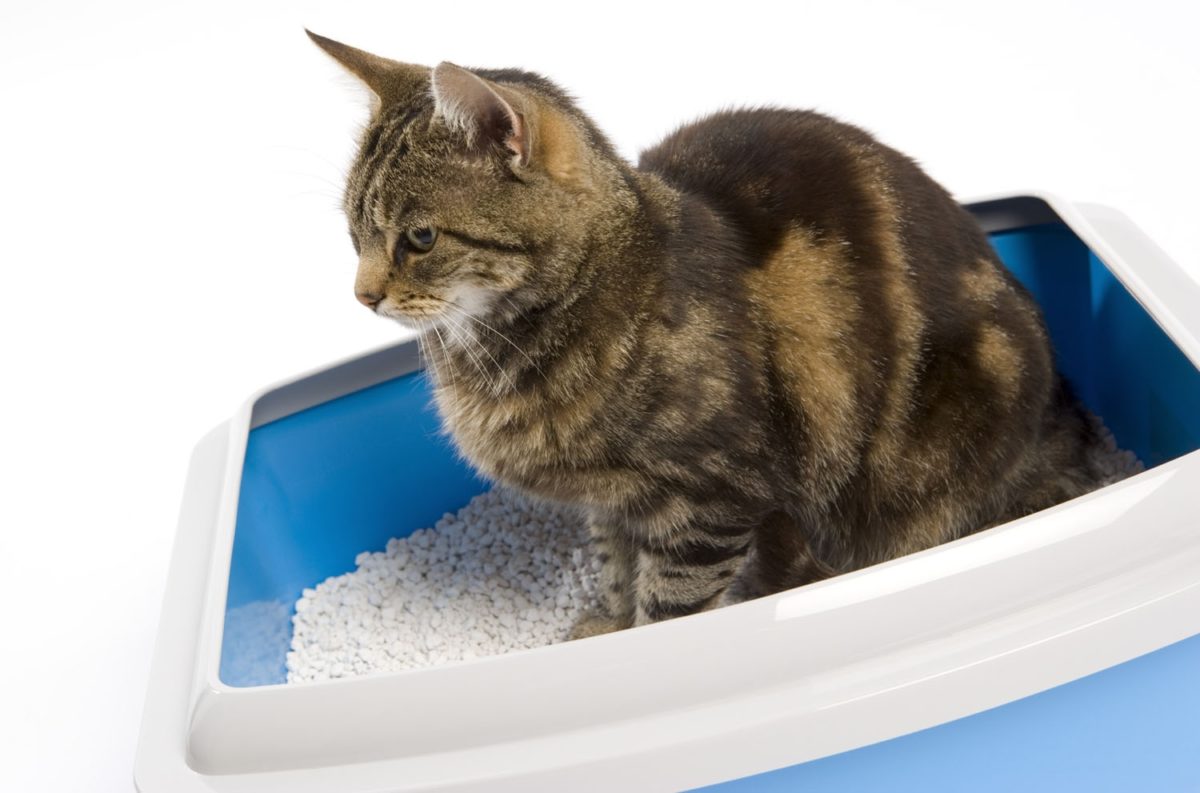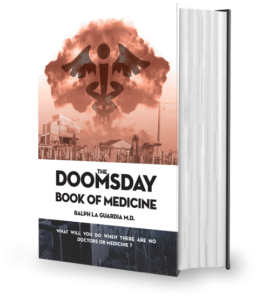Vehicle EDC Gear List: Don’t Leave the Driveway Without It
Your EDC gear that you carry daily can be used in millions of ways. It could be something as trivial as having a light to shine into a dark room for greater visibility or as serious as a weapon to defend your life or the lives of others. We carry and advocate EDC (Every Day Carry) to place tools on your body or within ready access that can make whatever situation you are faced with easier, safer or more survivable.
Some of the items I carry on my person (practically) everywhere I go are my concealed carry weapon, a folding knife, multi-tool, flashlight and bandana. Naturally, I have the more common items like a cell phone and a watch, usually some paracord and a Nalgene bottle of water in my bag but I don’t carry much more than that. This allows me what I consider are the basics that can be used in situations to provide me with an advantage.
For additional capacity I have my Get Home Bag or Bug Out Bag in my vehicle that has pretty much anything I would need in all but the most dire circumstances to live for 72 hours or more. I don’t have that on my person, but it is in my vehicle so when I am venturing away from home, those additional supplies are with me as well.
But there are supplies and gear I can expect to use that fall outside of the ideal mission for a Bug Out Bag. I don’t really want to raid that bag anytime I need something because I will then have to remember to put it back. Additionally, I don’t want to overload my bug out bag with gear I might not be able to use effectively in a bug out scenario. I don’t want unnecessary weight that could slow me down. Enter the vehicle EDC gear concept.
What is vehicle EDC gear?
Your vehicle EDC gear are supplies that can easily be stored in your vehicle that can give you advantages in situations where survival or simple convenience require them. Just like with my personal EDC gear that I have on my person, I might not use any of my vehicle EDC gear on a day-to-day basis. I might not use it for months or years, but it is there if I need it.
Your vehicle EDC gear extends your regular EDC gear but it doesn’t take the place of your Bug Out Bag.
Some of your vehicle EDC items can be stored in smaller pouches like this one.
Important factors to consider when choosing your vehicle EDC gear list?
Every person is different. We have different vehicles, different resources, and different commutes, live in different climates and have different priorities and concerns. The items I am listing for my vehicle EDC are ones that I have chosen based upon what I can see myself possibly needing on any day where I live and commute daily. My list isn’t set in stone and has and will evolve over time. Your list might look different and that is perfectly fine. This exercise is simply looking at what items could augment your daily carry EDC and make life a little better if you encounter an emergency.
The amount of time you spend in your vehicle, the work you do, the vehicle’s mechanical condition and what you may be able to fix, if needed all play into consideration for this list.
What vehicle EDC gear should you consider?
So with all of that out-of-the-way and without needing a tractor-trailer to haul everything, what are some ideas for vehicle EDC gear that could help you?
Water
We never used to carry water in any of our vehicles until I got into Prepping. It wasn’t long after that my wife decided that she didn’t like the thought of being stranded in the car with small children in the heat of the summer. Water is possibly the easiest thing you can do to affect your survival situation no matter what you are faced with. You can either buy a case of water and keep it in the trunk or fill up some stainless steel water bottles and store them. The stainless steel will prevent the plastic leaching into the water when it gets really hot, but don’t forget about them when the temperatures drop down to freezing. I lost a perfectly good SIGG water bottle this past winter due to that and some of my gear had mildew damage for sitting in water for I don’t know how long.
Food
This one might be up for debate. I know some people will say you should always have some spare food in your vehicle, but choosing the type of food is a little trickier because again you have to worry about it spoiling in the heat. Even if that isn’t an issue, you have to prepare it unless you buy something that requires no cooking. I have two mainstay emergency rations in my bug out bag, but I don’t have any spare food in my car. Would this be completely different if I was on a cross-country trip or commuted more than 10 miles to work? Yes, but as it stands right now I don’t.
Vehicle Maintenance/Misc.
Some of the items don’t apply to all vehicles and to all people. If you have zero mechanical skills for instance, there really isn’t any value in putting tools in your car is there? One could argue that maybe you should learn how to fix vehicles and I can see some value in that, but for me if my car broke down and I couldn’t see something very simple I could fix, I would start walking if there weren’t any other options. I wouldn’t be pulling the engine apart trying to see if I could fix some broken part with duct tape.
- Jumper Cables – This should be a no-brainer. My kids have run the battery down in our car while my wife was inside shopping. She wasn’t in there long, but it doesn’t take long running the fan in the summer, lights on and radio blaring to kill a battery. She had to call me because she didn’t have any jumper cables. It would have taken all of two minutes to get her back on the road, but because nobody around her had any, or was offering to help she was temporarily stranded. Needless to say, she had jumper cables that night.
- Duct Tape – Getting back to my point above, I don’t expect anyone is going to be fixing a flat tire or mending a broken axle with strong duct tape, but that stuff sure does come in handy. You probably don’t need an entire roll either, just wrap some around your water bottle for emergencies.
- Fluids (as necessary) – Again, this is vehicle dependent. I don’t carry any fluids because my vehicle doesn’t go through fluids that I should worry about it. Some people have older vehicles that needed the occasional topping off of oil or coolant. If that is you, plan accordingly.

- Flat Tire Tools – The simplest option is a good old can of fix a flat although sometimes that can cause more havoc when you take your tire into the shop and they refuse to fix the Tire Pressure sensor. The jack and wrench that come with your car are the bare essentials. They will get the job done, but not as easily as a beefier jack and lug wrench. Make sure the spare is full when you top off the other tires too. You don’t want to get a flat tire only to find out your spare is empty.
- Spare Gloves – A good pair of mechanix gloves or even simple leather work gloves will come in handy if you have to get your hands dirty. It is much easier to put on a set of gloves than to get grease off your hands.
- Tarp – Another multi-use item. A tarp can provide protection from rain. You can lay on it instead of muddy or frozen ground if you have to get under the car or it can protect the inside of your car from getting dirty.
- Gas Can (empty) – Again, this is one that I don’t personally have only because I am pretty much always filling up when my tank gets to half-full. I could regret this one day, but for me it isn’t needed at this time. If you do get one of the newer style (which are practically worthless, thank you California) be sure to get a Gas spout and modify the can so it actually pours.
- Basic Tools – Back to the initial point. Tools are great if you know what you are doing. If you can’t find the hood release, or recognize the big parts under the hood, this probably won’t do you any good.
- Demolition Hammer – This might be a luxury item but if you ever need to beat the ever-loving crap out of something or just hammer some tent pegs in, a big hammer will come in handy. Doesn’t take up too much space either.
Survival/Safety
- Multi-tool – The multi-tool goes in the duct tape category. Actually, for most people, this might be the only tool that you need. No, it won’t allow you to remove the water pump, but it can take on a myriad of smaller tasks.
- Spare Magazines – No, I don’t mean People Magazine or the latest Oprah. In addition to my concealed carry weapon, I have a weapon in my car. It is my EDC backup. Usually, there are a few more on long trips, but I always have spare magazines for each weapon ready to go.
- Seat Belt Cutter/Glass punch – The likelihood that you are going to be involved in an accident that requires you to cut your seat belt or shatter your window to escape is remote, but having something like the resqme car escape tool is cheap and provides some extra peace of mind.
- Rope – I have some general use Polly rope if I ever need to tie something down to the roof rack. Paracord is a suitable alternative too and takes up a lot less room.
First Aid
Most of the time you will need a first aid kit in your car it is going to be for either headaches or minor boo-boos. You likely won’t need the Elite First Aid fully stocked medic bag unless you drive up to a war zone or horrific accident and have the skills and training to know what to do. However, a good first aid kit gives me peace of mind. I don’t plan on surgery, but I do have some celox quick clot, some blood stoppers along with my own IFAK. If nothing else, I can help stop bleeding if I need to until help arrives. Then I’ll pop some aspirin and go back to my car.
- Decent first aid kit
- A couple extra blood stoppers or Israeli bandages
- Celox Quick Clot

A good handheld ham radio will work in disaster scenarios to communicate when traditional methods are out.
Communication/Navigation
Getting lost is half the journey, right? Well, if you have all the time in the world to kill and plenty of gas, maybe that sounds nice but I usually don’t go for joy rides. Have you ever been given the wrong directions on your GPS? We have. I have had Google Maps tell me to get off the highway at one exit, drive back to the previous exit and turn around again. Yes, like an idiot I followed it. GPS might cease to work, or due to some other reason, you can’t use it. I like to have backups.
- Road Atlas – Rand McNally has simple and low-cost maps that you should have in your car. Throw it in the trunk for emergencies.
- State Atlas – I also have a state atlas for my state that will help me get out of my neighborhood (figuratively speaking here) if the roads are blocked and I need alternate routes.
- Cell Phone Charge cord – You should have a spare cell phone charger in your car at all times. These are usually less than $20, plug into a USB to cigarette lighter adapter and can keep your phone going.
- Ham Radio w/Battery Charger – I have one of my Baofeng handheld radios in my car in case all else fails. This also has FM frequencies on it if I need to listen to local news/radio.
General Purpose
- Pen/Pad
- LED Flashlight
- Headlamp – Superior to a flashlight in a lot of cases due to the hands free nature.
- Light Stick
- Spare Batteries
- Lighter
- Toilet Paper
- Shop Towels
- Trash bags
Weather Dependent
The weather where you live greatly affects this list so I am not going to get too specific. I think people who live in colder climates already know the importance of keeping some supplies just in case.
- Cold Weather
- Tire Chains – or all-weather tires
- Wool Blanket –I like a wool blanket better than the space blankets although it is more expensive and takes up more space.
- Tow Strap – I now have a 4X4 so I have a tow strap just in case I can pull someone out who has fallen into a ditch. Again, this doesn’t make sense for all vehicles.
- Proper footwear
- Hot Weather
- More water, electrolyte solution
- Hats to block sun
What to store your vehicle EDC gear in?
Now, what do you store all of this EDC gear in? If you are building your kit out I would suggest you compile everything first and then choose a suitable container or containers for holding this gear. Some gear makes sense to be kept with similar associated gear and the potential for use might dictate where you place it. For instance, you might have food and any cooking supplies in one container. The vehicle you have will obviously dictate where some of this goes. The general purpose items could go in a glove-box, center console or a molle visor attachment.
I have different gear spread over the vehicle, but the majority sits nicely in a plastic tote from Rubbermaid. It’s there if I ever need it and I am not surprised at how often my vehicle EDC gear has come in handy. Maybe some of these items could help you out.
Your turn! What do you keep in your car that I missed?
Your EDC gear that you carry daily can be used in millions of ways. It could be something as trivial as having a light to shine into a dark room






 First, let’s look at what you will need to make your survival shelter. Ideally, you don’t want to be carrying a ton of tools around with you, so we’ll focus on building a shelter that only requires you to have minimal basic tools that you’ll probably already have packed: an axe, a fixed blade knife and a multi-tool. Let’s not beat around the bush, if you were going to build the same shelter at your own leisure, you could make the process a lot quicker using a whole host of other tools, but this isn’t about speed, this is about building a shelter to keep you safe.
First, let’s look at what you will need to make your survival shelter. Ideally, you don’t want to be carrying a ton of tools around with you, so we’ll focus on building a shelter that only requires you to have minimal basic tools that you’ll probably already have packed: an axe, a fixed blade knife and a multi-tool. Let’s not beat around the bush, if you were going to build the same shelter at your own leisure, you could make the process a lot quicker using a whole host of other tools, but this isn’t about speed, this is about building a shelter to keep you safe. The majority of trees are suitable for building a survival shelter. Even though hardwoods such as walnut, poplar or oak will give you a more durable build, they are harder to work with. Instead, choose Pine, Cedar or Spruce. If you don’t have an option – just build with whatever trees are growing in your area.
The majority of trees are suitable for building a survival shelter. Even though hardwoods such as walnut, poplar or oak will give you a more durable build, they are harder to work with. Instead, choose Pine, Cedar or Spruce. If you don’t have an option – just build with whatever trees are growing in your area. And there you have it – a long lasting survival shelter than will keep you safe, warm and dry. The instances in which you might need to build a structure of this quality and stability are rare, but as mentioned earlier, rather plan for all eventualities, than end up in a situation of needing a permanent structure and not knowing how to create one.
And there you have it – a long lasting survival shelter than will keep you safe, warm and dry. The instances in which you might need to build a structure of this quality and stability are rare, but as mentioned earlier, rather plan for all eventualities, than end up in a situation of needing a permanent structure and not knowing how to create one.











 4 SENTRY ALARM MINES .22 Cal trip wire alarms MULTICAM PREPPER PACK
4 SENTRY ALARM MINES .22 Cal trip wire alarms MULTICAM PREPPER PACK Homemade booby trap found in the woods of Provo Canyon.
Homemade booby trap found in the woods of Provo Canyon. The most common booby trap as far as prepping is concerned is probably the tripwire.
The most common booby trap as far as prepping is concerned is probably the tripwire. Spike booby trap used during Vietnam.
Spike booby trap used during Vietnam.















